Fungi in Space: Revolutionizing Life Beyond Earth
Posted by Troy Cosky, Founder FunGuy Grow Supply on 8th May 2023

Fungi in Space: Revolutionizing Life Beyond Earth
Are you ready to discover how fungi can revolutionize life beyond Earth? In this article, we will explore the incredible role of fungi in space exploration and colonization. From adapting to microgravity to providing sustainable food sources and even purifying the air, fungi have the potential to transform our future in space. Join us as we delve into the fascinating world of mushrooms and uncover their endless possibilities for a self-sustaining future beyond our planet.
In this article, we explore how fungi can support life, examine the various ways mushrooms might thrive in space, and why they make us feel like they're part of a cosmic solution to the obstacles presented by high levels of radiation in the cosmos. We will also delve into the origin of life and test how fungi contribute to the content of life beyond Earth.
Key Takeaways
- Fungi have the potential to colonize and terraform other planets.
- Edible mushrooms can serve as a sustainable food source for space missions.
- Fungi can contribute to waste management in space through their ability to decompose organic waste.
- Fungi can purify the air in space habitats, reducing volatile organic compounds and creating a healthier breathing environment for astronauts.
NASA, the leading authority in space travel, has long been intrigued by the potential of fungi for missions beyond our planet. Their adaptability and versatility are particularly valuable, especially on the International Space Station (ISS), where they've been employed to study their role in space environments. Fungi have also been used to produce valuable resources on long-duration missions.
Exploring Fungi's Life in Space : An Overview
In this section, let's explore the essential role fungi play in supporting life beyond Earth. As we venture into the realm of mushroom in space, one question arises: can fungi survive in space? Recent experiments have shown that they can indeed thrive in microgravity conditions. The growth of mushrooms in space has been successfully observed, shedding light on the potential role of fungi in extraterrestrial habitats.
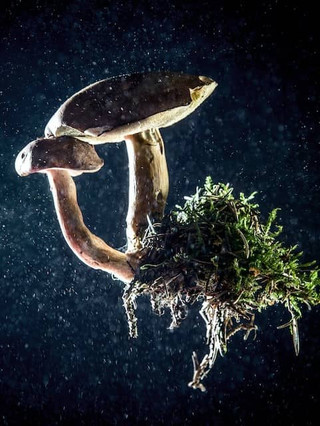
Exploring the role of mushroom in space is crucial because these remarkable organisms have the ability to break down and decompose organic matter. This decomposition process is vital for nutrient recycling, which is essential for sustaining life in any ecosystem. By consuming oxygen and producing carbon dioxide during respiration, fungi also contribute to the carbon cycle, maintaining the delicate balance of gases necessary for life.
Understanding the potential of fungi in space goes beyond their role as decomposers. These organisms have the ability to form symbiotic relationships with plants, enhancing their growth and nutrient absorption. By harnessing this beneficial interaction, future space missions could utilize fungi to create sustainable life support systems.
Moreover, fungi possess other unique traits that make them valuable in extraterrestrial environments. They are resistant to extreme conditions such as radiation, temperature fluctuations, and low nutrient availability. This resilience makes fungi excellent candidates for colonizing and terraforming other planets, potentially paving the way for human habitation in the future.
Fungal Adaptations to Microgravity: Implications for Space Colonization
For space colonization, fungi adapt to microgravity, revolutionizing life beyond Earth. The ability of mushrooms to survive and grow in space is a topic of great interest and research. Scientists have conducted experiments to investigate whether mushrooms can withstand the conditions of zero gravity, and the results have been promising. It has been observed that fungal spores, like those of other microorganisms, have the remarkable ability to tolerate harsh environmental conditions, including extreme temperatures and radiation levels. This resilience makes them ideal candidates for space colonization.
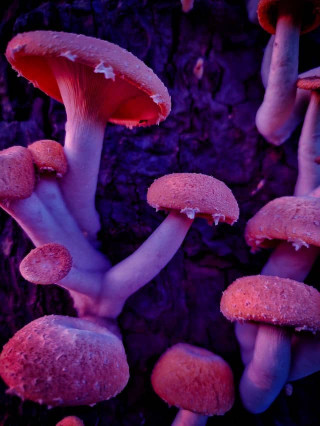
Understanding the adaptations of fungi to microgravity has implications beyond extraterrestrial colonization. The knowledge gained from studying fungal behavior in space can be applied to improve waste recycling and air purification systems in closed-loop environments on Earth. By engineering or manipulating microbial activity, scientists can develop more efficient methods for managing waste and maintaining a sustainable habitat in space.
Moreover, the potential of fungi used as a sustainable food source for space missions cannot be overlooked. Mushrooms are a rich source of nutrients, including protein, vitamins, and minerals. Their ability to grow in a variety of substrates and their rapid growth rate make them an excellent candidate for cultivating food in space. By harnessing the adaptability of fungi to microgravity, we can ensure a steady supply of nutritious food for astronauts during long-duration space missions.
Fungi as a Sustainable Food Source for Space Missions
Are you ready to discover the abundant potential of fungi as a reliable and nutritious food source for your future space missions? Cultivating fungi like mushrooms in space offers a promising solution to the challenge of providing sustainable food for astronauts during long-duration missions. Edible mushrooms, in particular, are rich in essential nutrients and protein, making them an excellent option for maintaining a healthy diet in space.

One of the major advantages of using fungi as a food source is their ability to grow with minimal resources and in a shorter period compared to traditional plants. This means that astronauts can enjoy fresh and nutritious food without the need for extensive agricultural systems. Additionally, fungi can be grown in controlled environments, making them suitable for space habitats where traditional farming may not be feasible.
Furthermore, some species of fungi possess medicinal properties that could be beneficial during space travel. These properties open up possibilities for treating illnesses and maintaining the health of astronauts in the challenging conditions of microgravity. The versatility of fungi in their applications, both as a food source and potential medicine, makes them a valuable resource for space missions.
Researchers are actively exploring the potential of fungi as a sustainable food source in microgravity environments. They are studying the growth and cultivation methods of various fungi species to optimize their nutritional content and ensure their safety for consumption in space. By harnessing the power of fungi, we can revolutionize food sustainability and security on long-duration space missions, providing astronauts with a reliable source of nutrition while minimizing resource consumption.
Waste Management in Space: Harnessing the Power of Fungi
Utilizing the power of fungi, you can effectively manage waste in space habitats, revolutionizing the way resources are conserved and repurposed beyond Earth. Fungi possess the remarkable ability to decompose organic waste, making them natural recyclers in space. These organisms excel at breaking down complex compounds and converting them into simpler forms that can be repurposed or reused. By harnessing the potential of fungi for waste management in space, we can develop efficient and sustainable systems to manage resources.
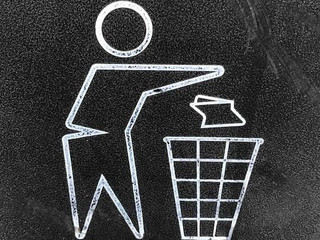
On Earth, fungi play a crucial role in ecosystem nutrient cycles. Mushroom growers often use coffee grounds as a substrate because fungi thrive on the rich organic material. This demonstrates the potential of using similar substrates in space habitats, where they can serve a dual purpose of producing food and managing waste simultaneously.
Implementing fungal-based recycling systems on space missions can also lead to reduced resource consumption and conservation of valuable resources like water and energy. By transforming waste into usable materials such as nutrients for plant growth or synthetic fabrics for manufacturing clothes or gear, fungi could significantly minimize waste associated with long-term human presence in space.
Furthermore, fungi have the potential to contribute to closed-loop systems in space habitats. They can break down waste into essential nutrients that can be used for cultivating plants, thus creating a sustainable food production cycle. Additionally, fungi can be used to produce biofuels, providing an alternative energy source that can further reduce reliance on external resources.
Levels of Space Radiation and Fungi
Space is fraught with high levels of radiation, posing a significant risk to astronauts and life-support systems. Fungi possess natural mechanisms to repair DNA damage caused by radiation exposure, and they can serve as a biological shield against harmful cosmic radiation in space. Their unique ability to survive in the face of radiation has the potential to protect both humans and sensitive equipment during extended missions in space.
Clean Air in Space: Fungi as Natural Air Purifiers
To achieve cleaner air in space, incorporate fungi as natural air purifiers. Fungi have shown remarkable potential in reducing volatile organic compounds (VOCs) such as formaldehyde, which can be harmful to human health. Recent research has revealed that it is not the common household plant, the Spider Plant, that is responsible for reducing formaldehyde levels in indoor spaces, but the endophytic fungi that reside within its tissues.

VOCs like formaldehyde can cause serious health issues, including cancer and liver damage, when inhaled in high concentrations over extended periods. Fungi have already proven their ability to maintain optimal breathing conditions on Earth, so it is logical to consider their application in enclosed extraterrestrial environments.
By incorporating fungi into air filtration systems designed for future space missions, Space Agencies can take advantage of their natural enzymatic processes to continuously remove toxins from spacecraft interiors and lunar habitats. This would ensure a healthier breathing environment for astronauts during long-duration space missions.
In addition to their air-purifying capabilities, fungi offer other advantages for space habitats. They can grow on organic waste materials, effectively breaking them down and converting them into useful resources. This dual functionality makes fungi a valuable asset for waste management and air quality control in space.
Furthermore, fungi are known for their ability to adapt and survive in extreme environments, making them ideal candidates for space missions where conditions can be harsh. Their resilience and versatility make them a reliable and efficient option for maintaining clean air in space.
Fungi's Medicinal Potential in Space Exploration
Discover the extraordinary potential of fungi's medicinal properties in revolutionizing space exploration. Fungi offer a wide range of medicinal applications that could greatly benefit astronauts during their missions beyond Earth's atmosphere. Here are some fascinating ways in which fungi could contribute to the healthcare of space travelers:

- Counteracting immune-suppressive effects: Fungi-derived compounds show promise in mitigating the immune-suppressive effects that astronauts experience in microgravity conditions. By harnessing the antimicrobial and anti-inflammatory properties of fungi, scientists could develop therapies to bolster the immune system and protect astronauts from infections.
- Radiation protection: Radiation is a significant concern for astronauts, but certain types of mushroom spores contain melanin, which has been shown to increase the survival rate against radiation exposure by an impressive 300%. By harnessing this natural defense mechanism, fungi could potentially shield astronauts from the harmful effects of radiation in space.
With their potential to combat immune suppression and provide radiation protection, fungi-based medicine holds great promise for revolutionizing healthcare in space. Moreover, fungal remedies offer a safer alternative to conventional pharmaceuticals, as they have fewer side effects. This makes them particularly valuable for long-duration missions, where access to traditional medications may be limited.
As we explore the medicinal potential of mushroom in space, it becomes evident that these organisms could play a crucial role in sustaining the health and well-being of astronauts. However, fungi's contributions are not limited to health but as well as medicines. They also have a remarkable role to play in biofabrication and materials, which we will explore in the next section.
Biofabrication and Materials: Fungi's Role in Sustainable Construction
Fungi's role in sustainable construction extends beyond their medicinal potential, as they serve as biofabricators and providers of eco-friendly materials for space exploration and habitat construction. These remarkable organisms possess unique structural properties that allow them to create strong materials similar to those found in trees or other plants. By harnessing the power of fungi, we can create sustainable insulation, biodegradable packaging, and even building materials that can be grown on demand.
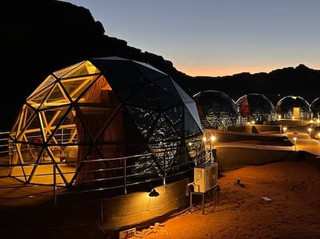
Sustainable insulation is a crucial aspect of habitat construction, especially in space environments where maintaining stable temperatures is essential. Fungi can be manipulated to produce insulating materials that are not only effective but also environmentally friendly. These biofabricated insulating materials can help reduce energy consumption and provide a more sustainable solution for maintaining comfortable living conditions in space habitats.
Biodegradable packaging is another area where fungi can make a significant impact. Traditional packaging materials often contribute to waste and pollution, but biofabricated packaging made from fungi can be easily decomposed and recycled. This not only reduces the environmental footprint but also ensures that resources are used efficiently in space exploration missions.
In addition to insulation and packaging, fungi can also be used to create building materials that are grown on demand. This means that instead of relying on resource-intensive supply chains, habitats can be constructed using materials that are produced locally. Fungi can be manipulated to grow into desired shapes and structures, providing a versatile solution for any habitat needs based on the specific environment.
Furthermore, these biofabricated materials could play a vital role in terraforming other planets. By helping initiate the growth of vegetation and soil formation through decomposition, fungi can support colonization efforts on distant planets. This is crucial for creating sustainable ecosystems and supporting long-term habitation beyond Earth.
Challenges and Considerations for Cultivating Fungi in Space
Cultivating fungi in space poses numerous challenges and considerations that require careful management of environmental factors and adherence to strict protocols. The growth of space fungus in microgravity requires precise control of temperature, humidity, and nutrient availability. To help you better understand the challenges and considerations involved, here are two sub-lists:
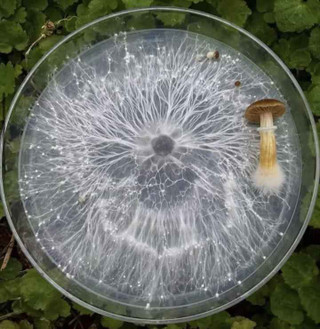
Challenges:
- Environmental factors: The absence of gravity in space affects the distribution of moisture and nutrients, making it essential to find innovative ways to provide fungi with the necessary resources.
- Space constraints: Limited space within spacecraft necessitates the development of compact and efficient cultivation systems that can maximize fungal growth while minimizing resource consumption.
Considerations:
- Safety protocols: Ensuring the well-being of astronauts and preventing the spread of potentially harmful fungal species is crucial. Strict protocols for monitoring and maintaining indoor air quality must be implemented to minimize health risks.
- Interdisciplinary collaboration: Successfully cultivating mushroom in space requires collaboration across various fields, including environmental science, microbiology, and engineering. The expertise of mycologists, astromycologists, and astrobiologists is vital in identifying potential risks and developing effective safeguarding procedures.
Mushrooms in Space: Unlocking the Potential for a Self-Sustaining Future
To unlock the potential for a self-sustaining future in space, mushrooms offer a transformative solution for maintaining life support systems and ensuring the success of extraterrestrial habitats. These fascinating organisms are not only a source of sustenance but also possess unique properties that make them invaluable for space exploration.
One remarkable feature of mushrooms is their ability to efficiently convert waste into usable resources. They are adept at breaking down organic matter, such as plant material and human waste, into essential nutrients. This process, known as bio-remediation, can help manage waste in closed-loop systems, reducing the need for external supplies and minimizing the environmental impact.
Moreover, mushrooms have the potential to purify air within space habitats. Through a process called mycoremediation, certain species can absorb and filter harmful pollutants, providing a natural means of maintaining air quality. This capability could be vital for long-duration space missions, where ensuring a healthy and breathable environment is crucial.
To highlight the significance of mushrooms in space exploration, consider the following table:
| Mushroom Properties | Benefits in Space |
|---|---|
| Efficient waste management | Reduces reliance on external supplies and minimizes waste buildup |
| Air purification | Improves air quality for long-duration missions |
| Nutritional value | Provides a sustainable source of food |
| Potential for medicine | Offers the possibility of developing new treatments and medications |
The potential for mushrooms to provide a self-sustaining future in space is immense. Their ability to manage waste, purify air, and serve as a nutritious food source make them an invaluable asset for long-duration missions and establishing extraterrestrial habitats. Further research and development in this field will undoubtedly unlock even more possibilities for utilizing mushrooms in space exploration, leading us closer to a self-sustaining future among the stars.
Unlock the Potential of Fungi:
Visit FunGuy Grow Supply for top-quality mushroom growing supplies, including grow bags, kits, and spawn. Start your mushroom growing journey today!Frequently Asked Questions
How Do Fungi Adapt to Microgravity in Space?
How do fungi adapt to microgravity in space? Fungi, like all living organisms, have the remarkable ability to adapt to their environment. In the unique conditions of microgravity, fungi undergo certain changes to survive and thrive. They may alter their growth patterns, develop stronger cell walls, and enhance their reproductive strategies. By understanding how fungi adapt to microgravity, scientists can gain valuable insights into the potential for life beyond Earth and the possibilities of colonization in space.
Can Fungi Be Used as a Sustainable Source of Food for Extended Space Missions?
Can fungi be used as a sustainable source of food for extended space missions? Well, fungi have some unique properties that make them a potential option. They can grow in a variety of environments and can be easily cultivated. Additionally, they are rich in nutrients and can provide a good source of protein. So, considering their adaptability and nutritional value, fungi could be a promising solution for providing food during long-duration space missions.
What Role Can Fungi Play in Waste Management in Space?
Fungi can play a crucial role in waste management in space. They have the ability to break down organic matter and recycle nutrients, making them excellent candidates for treating and recycling waste products. By harnessing the power of fungi, you can effectively manage and reduce waste in space, ensuring a more sustainable and efficient system. Fungi's unique abilities make them a valuable asset in revolutionizing life beyond Earth.
How Do Fungi Contribute to Air Purification in Space?
Fungi contribute to air purification in space in several ways. First, they can break down harmful pollutants like formaldehyde and benzene through their metabolic processes. Second, they can release enzymes that neutralize toxins and improve air quality. Lastly, fungi can absorb and trap airborne particles, reducing the presence of allergens and pollutants in the air. By harnessing the power of fungi, we can create a cleaner and healthier environment for astronauts living in space.
What Is the Medicinal Potential of Mushroom in Space Exploration?
What if I told you that fungi could potentially revolutionize space exploration? Well, it's true! When it comes to medicinal potential, mushroom in space have shown great promise. They contain bioactive compounds that could be used to develop new drugs and treatments for astronauts. Imagine a future where fungi are used to heal and protect astronauts during long-duration space missions. It's an exciting possibility that could greatly enhance our ability to explore and survive beyond Earth.
References
- Dadachova, E., & Casadevall, A. (2008). Ionizing radiation: How fungi cope, adapt, and exploit with the help of melanin. Current Opinion in Microbiology, 11(6), 525-531. https://doi.org/10.1016/j.mib.2008.09.013
- Moore, D., & Stockus, A. (1998). Comparing plant and fungal gravitropism using imitational models based on reiterative computation. Advances in Space Research, 21(8-9), 1179-1182. https://doi.org/10.1016/s0273-1177(97)00632-7
- Stamets, P. (2005). Mycelium Running: How Mushrooms Can Help Save the World. Berkeley, CA: Ten Speed Press.

